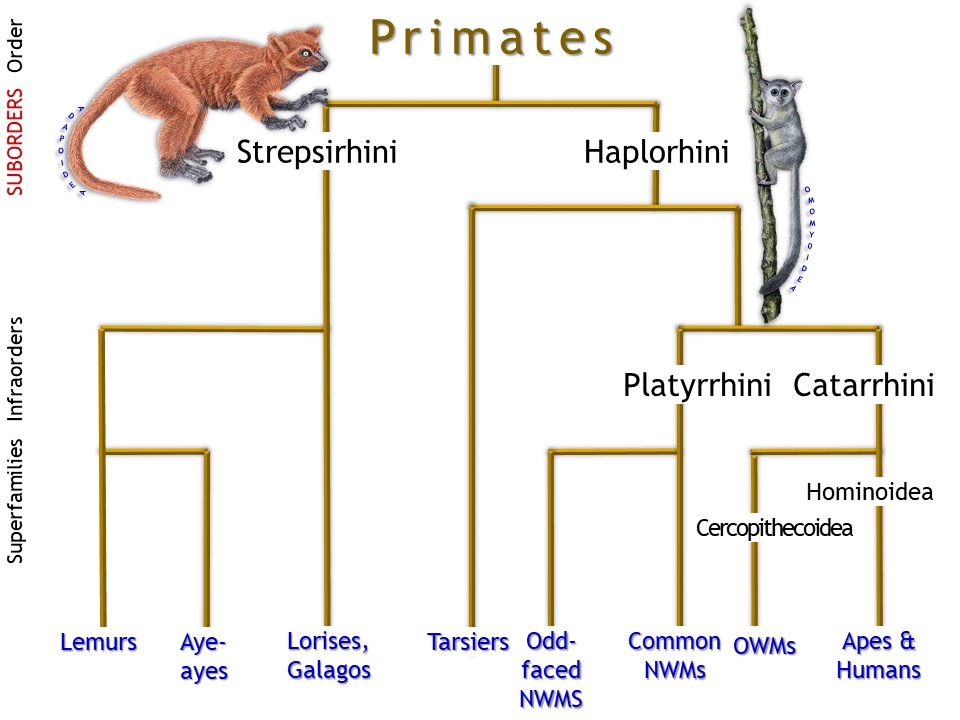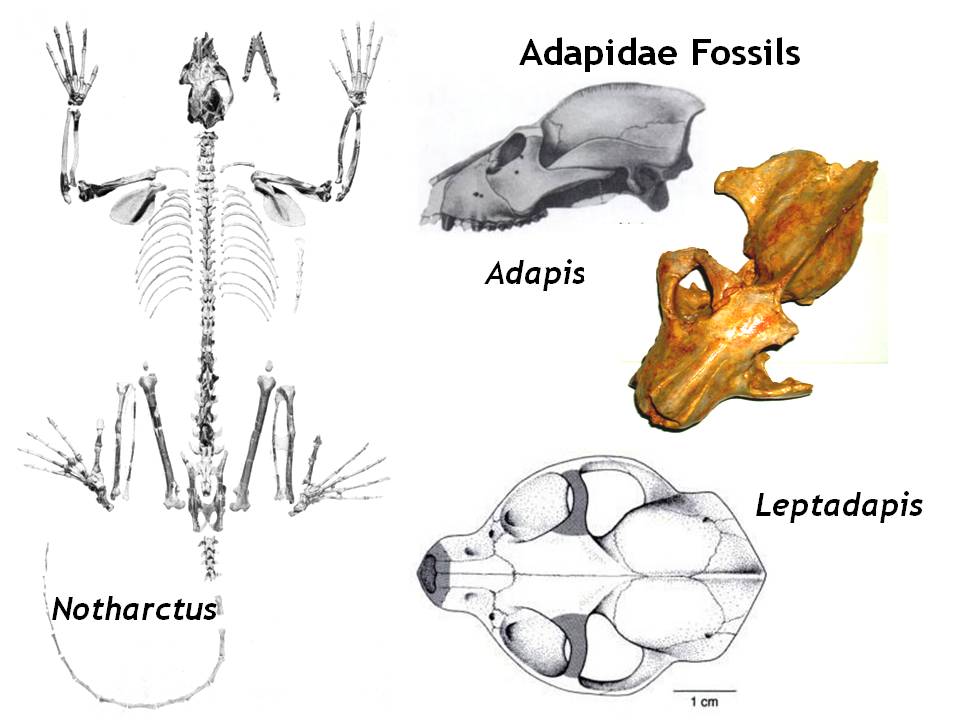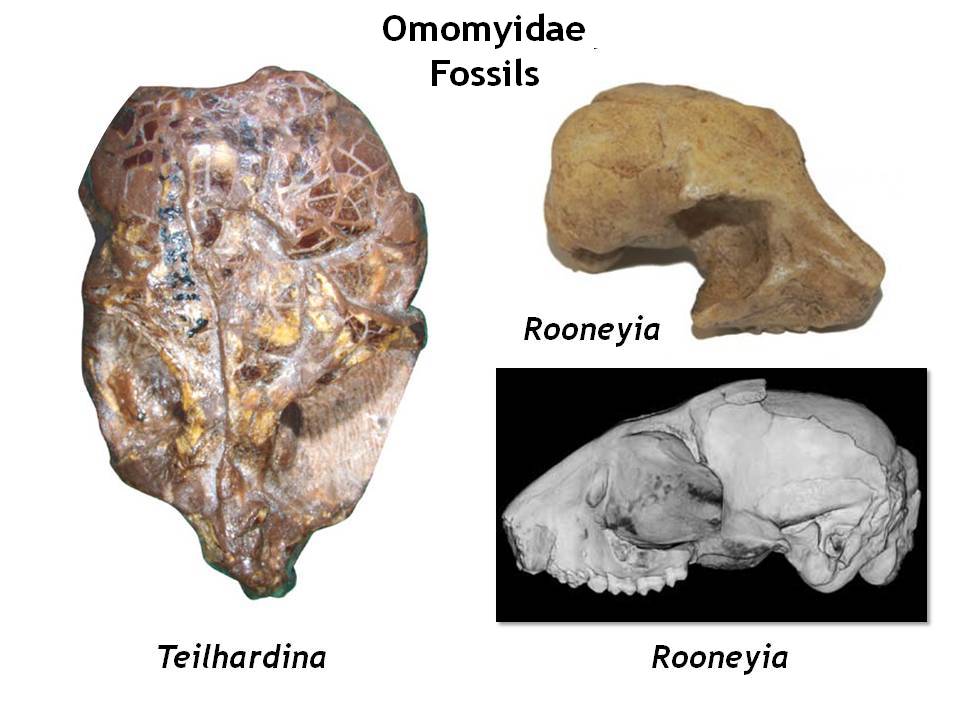Lab 10 Eocene Fossil Primates
1/7
There's no tags or description
Looks like no tags are added yet.
Name | Mastery | Learn | Test | Matching | Spaced |
|---|
No study sessions yet.
8 Terms
Eocene Epoch
56.0-33.9 Ma

Where were these Eocene Fossils found?
The continents were almost in their modern positions but, at times, North America, Europe, and Asia were connected. Not surprisingly, Eocene primates are known from fossil localities on all of these continents plus Africa
North American fossil localities include those from the Bighorn Basin in Wyoming
Eocene Primate Traits
Forward-facing eyes
Nose below eyes
Post-orbital bar
Nails on most digits
Divergent hallux
Eocene Primate Classification
Even though Eocene primates are the oldest-known in the fossil record, they have already diverged into two distinct taxonomic groups: Adapidae & Omomyidae

Adapidae: (Superfamily Adapoidea)
Have most of the diagnostic traits of the Suborder Strepsirrhini and appear to be early members of the lineage that gave rise to today's lemurs, lorises, and galagos

Omomyidae: (Superfamily Omomyoidea)
Have most of the diagnostic traits of the Suborder Haplorrhini and appear to be early members of the lineage that gave rise to today's tarsiers, monkeys, apes, and humans!

ADAPIDAE ADAPTIVE PROFILE
STREPSIRRHINI TRAITS: Open eye orbits, external lacrimal duct, wet nose, (missing a tooth comb)
ACTIVITY: Diurnal (examine the relative size of the eye orbit for skull length)
DIET: Some frugivorous, some folivorous (TBM above 500 g, premolars & molars have low-rounded cusps OR high-crested cusps)
LOCOMOTION: Quadrupedal (look at relative limb lengths)
FOSSIL SPECIES: Cantius
GOOD MODERN PRIMATE MODEL: Common lemurs in Madagascar
OMOMYIDAE ADAPTIVE PROFILE:
HAPLORRHINI TRAITS: Closed eye orbits, internal lacrimal duct, dry nose, no tooth comb
ACTIVITY: Nocturnal (examine the relative size of the eye orbit for skull length)
DIET: Most insectivorous/faunivorous, some frugivorous (TBM below 500 g, premolars & molars have high-pointed cusps OR low-rounded cusps)
LOCOMOTION: Leapers (look at relative limb lengths)
FOSSIL SPECIES: Teilhardina, Tetonius
GOOD MODERN PRIMATE MODEL: Tarsiers in southeastern Asia